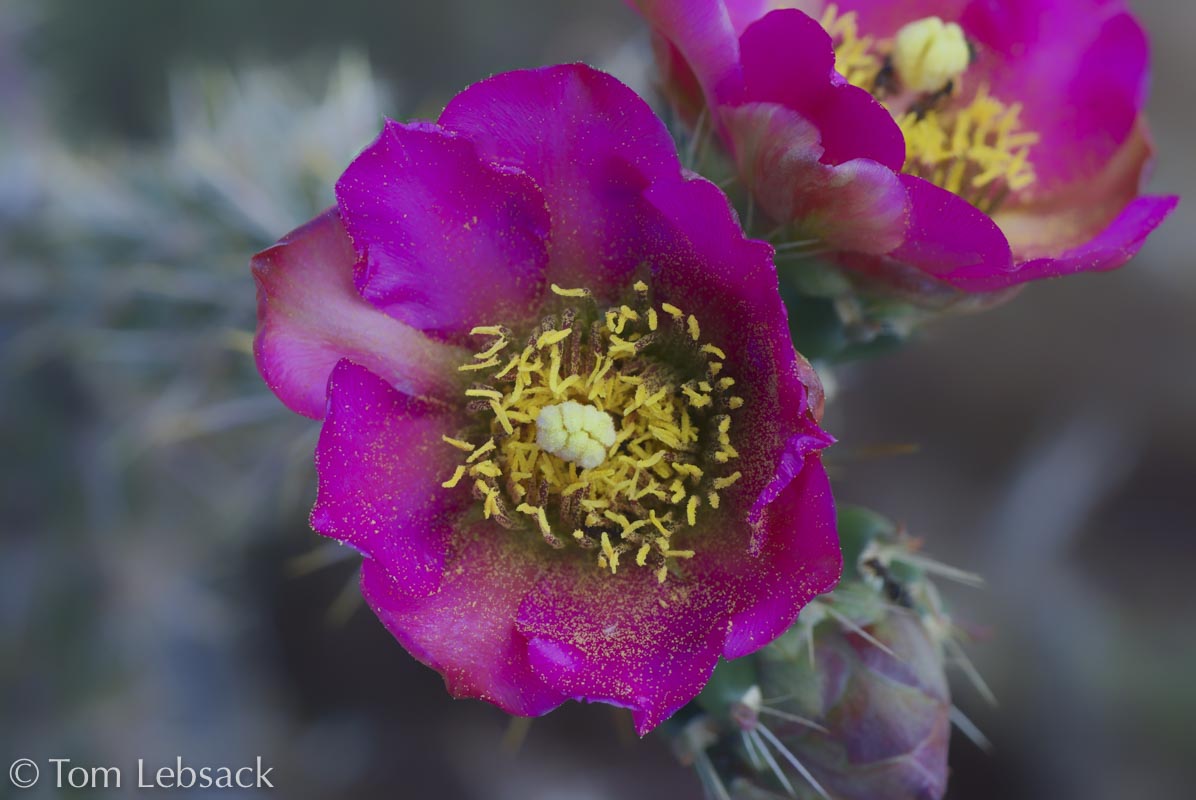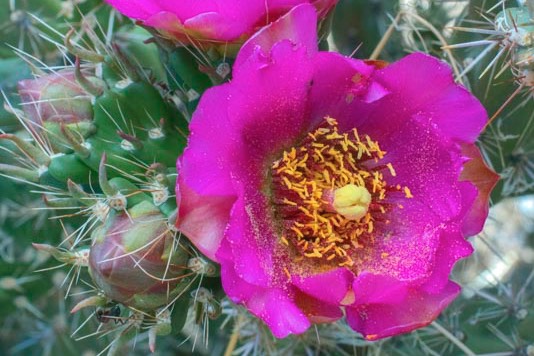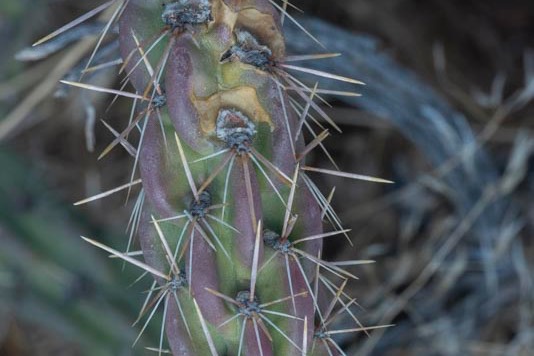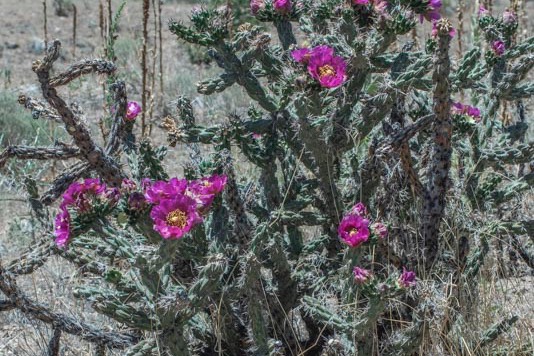Cylindropuntia imbricata var. imbricata
(Tree Cholla, Cane Cholla)

Cylindropuntia imbricata var. imbricata, Picket Wire Canyon, Comanche National Grasslands, Otero Co. 7946/7947

Cylindropuntia imbricata var. imbricata, Picture Canyon, Comanche National Grasslands, Baca Co. 9573
| Scientific Name | Cylindropuntia imbricata var. imbricata (Opuntia imbricata var. imbricata, Opuntia imbricata var. arborescens) | USDA PLANTS Symbol | CYIMI |
| Common Name | Tree Cholla, Cane Cholla | ITIS Taxonomic Serial No. | 913475 |
| Family | Cactaceae (Cactus) | SEINet Reference |
Click Here |
| Description | Habitat: Plains to foothills (4400 to 6500 ft.); gravelly or sandy igneous and sedimentary soils in dry, open areas. Plant: Tree- or shrub-like, up to 6 to 8 feet tall (shorter in higher elevations); many-branched contorted stems 1-inch or more in diameter. Pads & Spines: No pads; gray-green, cylindric joints 5 to 16 inches long, 5/8 to 1-5/8 inches in diameter with prominent, overlapping tubercules 1 to 2 inches long; spines (tan to dirty white or yellowish) usually at most areoles with 8 to 15 spines per areole, 1/3 to 1-1/8 inches long. Inflorescence: Flowers with reddish-purple tepals 2 to 3 inches across; greenish to greenish-red filaments about 3/8-inch long; yellow to cream-colored anthers; style about an inch or more long with cream-colored to green, 5 to 8-lobed stigma. Bloom Period: May to July. Fruit: Yellow, spineless, egg-shaped/cylindrical, 1 to 1-3/4 inches long with prominent tubercules; long-lasting. References: "Flora of Colorado" by Jennifer Ackerfield, "Cacti of Texas" by Powell, Weedin and Powell and Flora of North America |
BONAP Distribution Map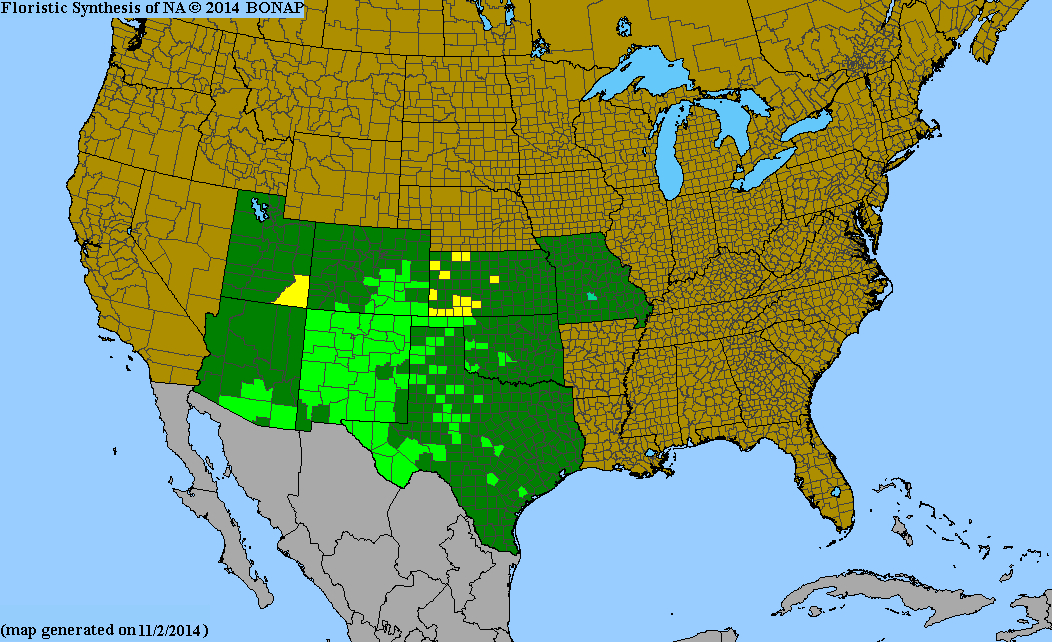 Map Color Key |
Colorado Status: Native |
© Tom Lebsack 2025
Banner photo: Castilleja rhexifolia and a brewing storm over the San Juan Mountains
I try to provide accurate, up-to-date, and relevant information, but cannot guarantee the completeness or accuracy of any information presented on this website. I use authoritative references to insure high standards of accuracy and review and update the information frequently.
